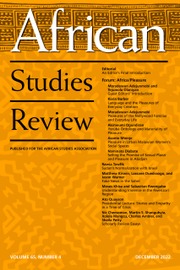A traditional interpretation of the distinction between the value of people and material goods in precolonial African political economies has highlighted the importance of wealth accumulation in the form of dependents—to explain the African processes that produced the people who became slaves—to the detriment of forms of accumulation of material wealth. Wealth, Land, and Property in Angola, by Mariana P. Candido, discusses how this historiography has underestimated the significance of material wealth, including land, in Angola. It seeks to challenge that interpretation through critically rereading colonial documents and local narratives about land rights.
Briefly, the book aims to investigate the changing dynamics of land usage, occupation, and rights in West Central Africa during the late sixteenth and early twentieth centuries, focusing on how the codification of Portuguese law supplanted previous procedures, frequently neglecting indigenous African land rights. The main argument is that contrary to the notion that land was plentiful and of little value, African societies sincerely appreciated and fought for their land rights. It argues that land appropriation and slavery were inextricably linked and that colonial narratives misrepresented and oversimplified Africans’ complex social and economic relationships to justify appropriation and colonialism.
The book starts by highlighting the complexity of African relations with the land. It demonstrates how land occupation was deeply linked to kinship, community, and social context. Chapter One argues that the arrival of Europeans in Angola was responsible for bringing new conceptions of territorial sovereignty, resulting in land use and rights disputes. It challenges the myths that formal land tenure systems were nonexistent in precolonial African communities by demonstrating the active negotiation and contestation of land rights well before the nineteenth century. Chapter Two analyzes the situation in the nineteenth century, arguing that implementing codified laws favored land privatization. The cessation of the transatlantic slave trade prompted colonial rulers to seek alternative forms of economic exploitation, such as agriculture, which fueled these legislative developments. As a result, Africans were increasingly evicted from their land and compelled to work on colonial enterprises, while European concepts of property were reinforced as superior and universal. Chapter Three shows that, despite the hurdles imposed by colonialism, many Angolan women successfully participated in the colonial legal system to secure and safeguard their land rights.
The book’s emphasis on the significance of material wealth in the form of land does not preclude it from analyzing the prominent role of human property in nineteenth-century West Central Africa. Chapter Four argues that slavery survived in Angola despite abolitionist groups and mounting pressure to abolish the trade in enslaved Africans. Additionally, it suggests that the rise of colonial bureaucracy supported the commodification of humans, causing a significant increase in cases of pawning and the use of people as collateral for debts. Chapter Five deals with the social position of libertos (freed people) in nineteenth-century Angola, arguing that, despite being released from slavery, many Africans were locked in a system that continued their exploitation through forced labor and restrictive legislation.
The book concludes by focusing on land ownership and consumption patterns in Angola. Chapter Six argues that, despite evidence of local occupancy and jurisdiction, European liberal reforms and the end of the Atlantic slave trade changed the value and treatment of land in the region, establishing private property based on written records. This process benefited European settlers and elites while marginalizing native populations. Chapter Seven, by contrast, examines the role of Africans as active consumers of imported products. When describing the main consumer interests of Africans—firearms, fabrics, and luxury goods—the book argues that these consumption trends not only created a complex interaction of trade and violence, as the need for these products fueled wars and exploitation, but also affected social status and identity, since material items became essential indicators of wealth and prestige.
To support the book’s points, Candido takes advantage of one of the main peculiarities of the primary sources available in the colonial archives relating to Angola, which concerns the wealth of details about the locally born “regular folks” (28). This feature allows her to dive into a local analysis of individual lives to show how these African men and women could behave as active agents, employing “mechanisms to create advantages in the context in which they were clearly losing political and economic space” (28). In one of the cases, Candido uses an inventory to show how West Central African women such as Joana Martinho Lopes owned properties in the form of “urban real estate” and “luxury goods” (121). Beyond that, she also counts on African oral accounts and written documents, advocating for a greater availability of African archives to the public. She uses the Caculo Cacahenda archive to show how African leaders used oral and written sources to document their property claims.
Wealth, Land, and Property in Angola is a welcome addition to the scholarship about wealth accumulation in West Central Africa. The fruit of extensive archival research, anyone who delves into themes such as land ownership and human property in Angola - and in Africa more generally - must consider this critical contribution to scholarly literature. Candido’s work skillfully reconnects human and immovable property in Angolan history, highlighting how land expropriation and slavery were part of the same oppressive colonial structure. Beyond that, by setting her work within a broader debate on colonialism, she demonstrates colonial impact on African communities, resisting the erasure of African agency and material property.

